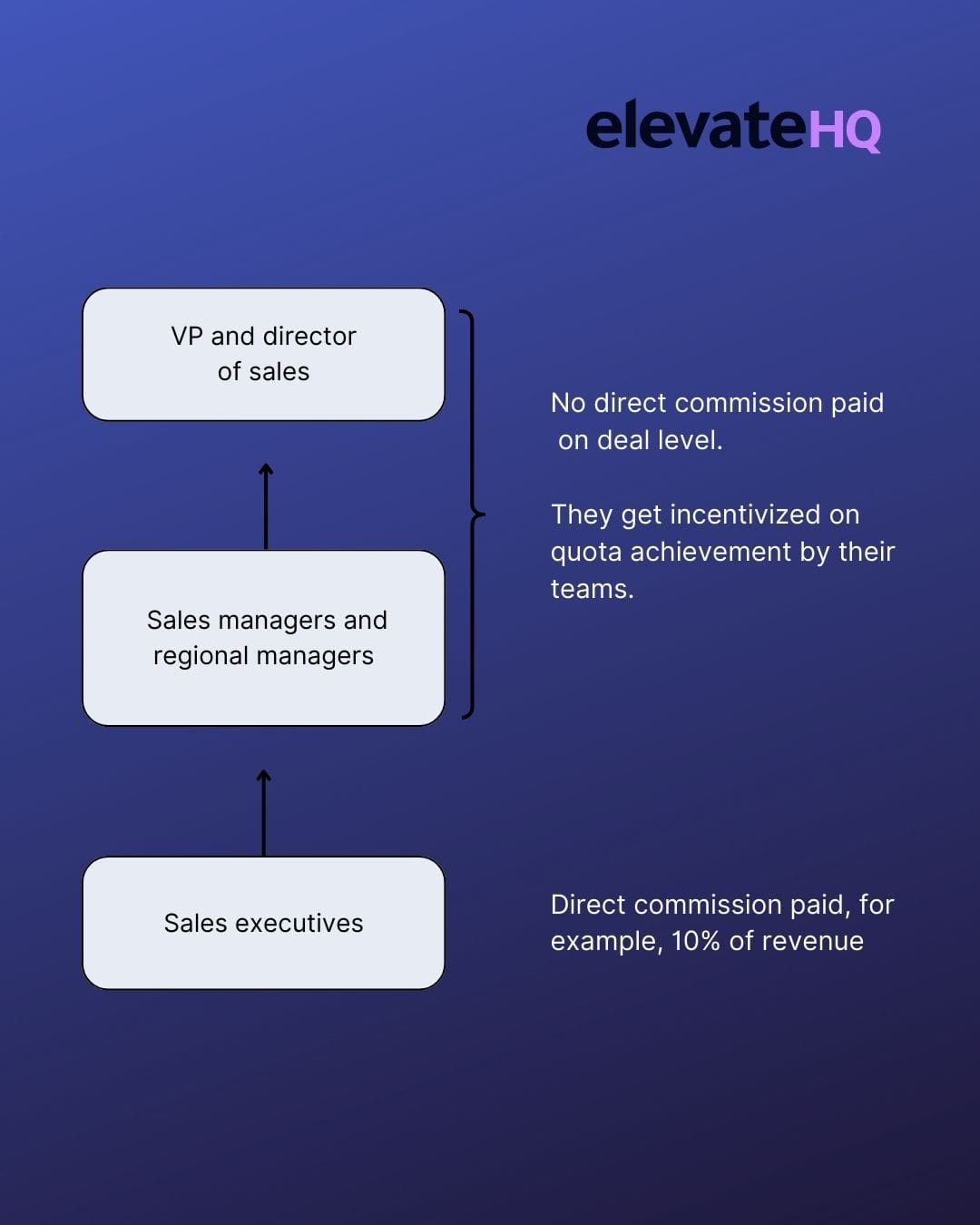Understanding and implementing sales incentive roll up


If you are trying to build high-performing sales teams, understanding sales incentive roll-ups is crucial. In this blog, we’ll outline the incentive roll-up structure, its benefits, drawbacks, and implementation steps.
Read on to learn how incentive roll-up fosters a culture of accountability and motivation across the board.
Roll-up means that you are crediting sales reps' work to people in managerial roles. You can credit performance and incentives. The core is to make managers responsible and accountable for sales rep’s performance. Only when they perform does the manager get compensated.
Here are two examples of sales incentive roll up that address performance and incentive rollers:
Suppose each salesperson in a team has a quarterly sales target of $100,000. The team has five salespeople, setting the team quota at $500,000.
Now, the manager will have a compensation structure. Compensation will be paid based on the targets. The manager’s compensation will be based on 100% of the team’s performance(quotas). If they achieve 100% or 90%, then the manager gets compensated accordingly.
Managers get incentivized directly based on the revenue generated. The manager’s compensation can be 20% of the revenue generated from the team. If the team makes $30000, then the manager gets $6000 as a 20% commission.
Performance roll-up is more common than incentive roll-up.
Sales roll-up is a function of creating sales hierarchies. When it is a small business, it is generally the CEO who handles sales folks directly.
However, when the company grows and more managerial roles come up between the sales rep and CEO, such as regional head, VP of sales and more roll-ups are implemented.
You should implement roll-up when you don’t want to give or give less individual targets to people in managerial roles and only make them focus on team performance.
To summarize you can implement it when you are
Here are the benefits of incentive roll up for managers:
As managers make money when the team performs, it brings in an accountability layer that encourages managers to monitor, support, and drive their team's performance. Since managers also reap the rewards, they focus on effective goal-setting, regular check-ins, and tailored coaching, and improving the team’s productivity.
Commission roll-ups provide an incentive for managers to develop leadership skills, such as coaching, conflict resolution, and motivational techniques. As they work to maximize team potential, they cultivate skills that benefit the company, building a bench of skilled leaders.
For team members, they can be assured that the managers will invest in training and coaching them because of this model.
Here are two crucial drawbacks that you should consider rectifying if you implement incentive roll up:
Managers can rely heavily on high performers to achieve their roll-up targets. This does not help average performers as they won’t get coached and pushed by the manager to do better.
How to fix?
Ensure equitability by adding a clause saying 60% of the team members should achieve more than 80% for the roller to work. This way, the manager ensures in a team of 10, at least six people achieve more than 80% percent of their quota. This way, you can ensure the manager coaches everyone in the team and not just piggybacking from one or two naturally good performers.
Once the hierarchy becomes large, you lose sight of how much commission you are paying at the deal level as you have to pay multiple people. Sometimes, you pay too much, and the deal is not even profitable. If your profit margin on the deal is 12%, then let’s say you are paying your rep 6%, 4% to the sales manager, and 2% to the VP of sales. The deal is not profitable now. You have to pay less than your margin in commissions for a sustainable business.
How to fix it?
Attribution at the manager or VP level is hard as they are not paid directly on the deal level. They are paid for the overall achievement of the team’s target. However, instead of just taking into account the commission paid for sales reps, you have to take into account how much you are paying others in the hierarchy for a sharper understanding.
You can fix this by breaking down the commission at all levels and calculating the margin vs. commission.


You can easily add a roll-up of quota for managers.
The best part is the ElevateHQ dashboard shows a breakdown of the commissions earned by a user under different plans helping you easily attribute.